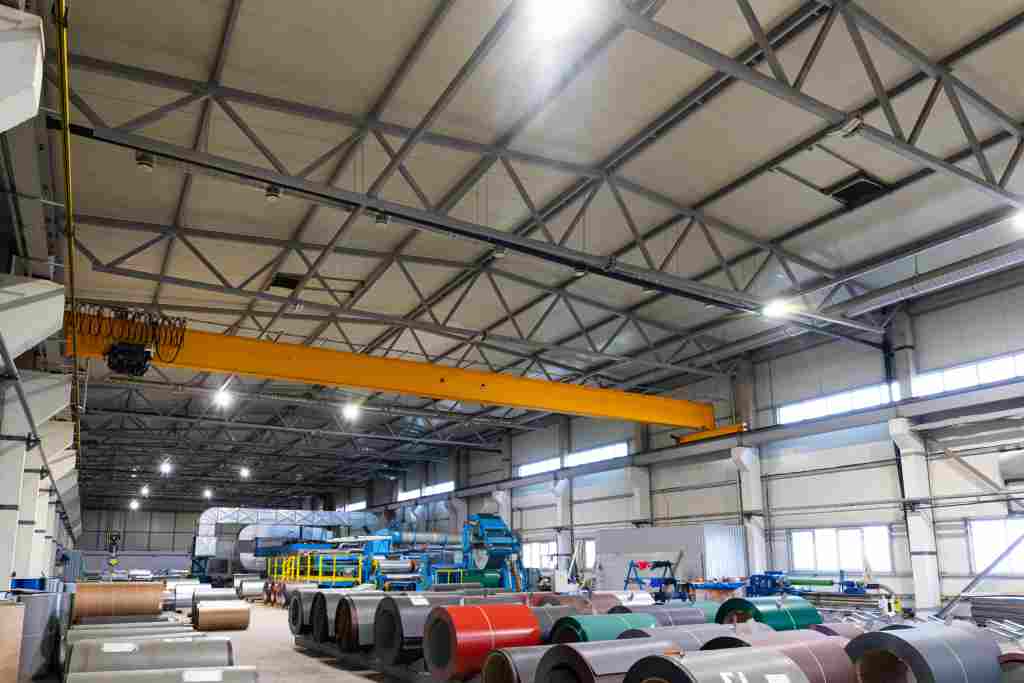
In any busy factory or workshop, moving things around safely and efficiently is crucial. Overhead cranes are a trusted solution for this, and among them, the Single Girder EOT Crane (Electric Overhead Travelling Crane) stands out. It’s a popular choice because it’s efficient, easy to install, and surprisingly versatile.
These cranes are particularly good for handling lighter to moderately heavy items, helping businesses keep production moving smoothly. In this article, we’ll break down what a Single Girder EOT Crane is and how it works its magic.
What Exactly is a Single Girder EOT Crane?
Think of it as a strong, overhead arm for your workspace. As the name suggests, it uses a single main beam (girder). This beam is supported at each end by special wheels, called end trucks.
Attached to the underside of this single beam is the hoist, which is the part that actually does the lifting and lowering with a hook. This entire crane system moves along runway beams that are usually mounted high up, either on the ceiling or supported by special columns in your building.
Because of its design, a Single Girder EOT Crane is quite compact. This means it takes up less valuable floor space and also requires less overhead room, which can be a big advantage in many facilities.
How Does a Single Girder EOT Crane Work?
The clever part about a Single Girder EOT Crane is how its different parts – mechanical, electrical, and control systems – work together smoothly to lift and move loads wherever they’re needed.
1. Getting Power and Control
Electricity powers the crane, usually supplied through a system of cables or a conductor bar. The operator controls the crane using either a handheld control (a “pendant push button station”) or a wireless remote control. When you press a button, these signals tell the motors and the lifting system what to do.
2. Moving Along the Length of Your Building (Long Travel)
The “end trucks” have motors and wheels that allow the entire crane structure – the main beam and everything attached to it – to travel back and forth along the runway beams. This lets the crane cover a wide area, moving quickly from one end of your factory floor to the other.
Industrial Example: Imagine a fabrication shop where steel plates need to be moved from a cutting station to a welding bay that’s 50 feet away. The long travel feature lets the crane quickly get from one point to another.
3. Moving Across the Width of the Crane (Cross Travel)
The hoist, with its hook, travels horizontally along the single main beam. This movement is called “cross travel.” It’s what allows the crane to precisely position the hook directly above the item you need to lift, no matter where it is across the width of the work area.
Industrial Example: In a small assembly plant, a Single Girder EOT crane might move engine components from a storage rack, located on one side of the bay, directly to an assembly jig in the middle of the bay.
4. Lifting and Lowering (Hoisting Mechanism)
The hoist is the heart of the lifting operation. It contains a motor, gears, a drum, and a strong wire rope or chain. When the motor is activated, it either coils the rope/chain onto the drum (lifting the load) or uncoils it (lowering the load).
Industrial Example: A workshop might use a Single Girder EOT Crane to lift a heavy die from a storage shelf and carefully lower it onto a press machine.
5. Built-in Safety Features
Safety is paramount. These cranes come with important safety features like emergency stop buttons (for immediate shutdown), electromagnetic brakes (to hold the load securely even if power is lost), and overload protection systems. This last feature prevents the crane from attempting to lift more weight than it’s designed for, protecting both the equipment and personnel.
6. Load Handling and Ready for Next Job
By combining long travel, cross travel, and hoisting, the crane provides complete 3-axis movement of the load (up/down, side-to-side, and forward/backward). Once the load is precisely placed at its destination, the crane can either return to a “home” position or wait for its next command, ready for the next task.
Conclusion
For businesses that need reliable, efficient, and safe ways to lift light to moderate loads, the Single Girder EOT Crane is an excellent choice. It offers a compact design, ease of operation, and contributes significantly to streamlining workflows.
At ElectroMech, we understand the importance of dependable material handling. Our Single Girder EOT Cranes are engineered with efficiency and advanced technology, helping countless industries optimize their operations and achieve long-term success.
To learn more about how our Single Girder EOT Cranes can benefit your business, reach out to us today! swapneel@emech.sa